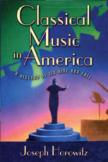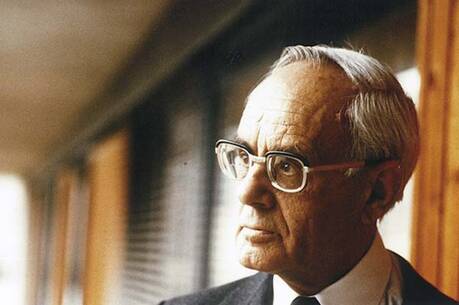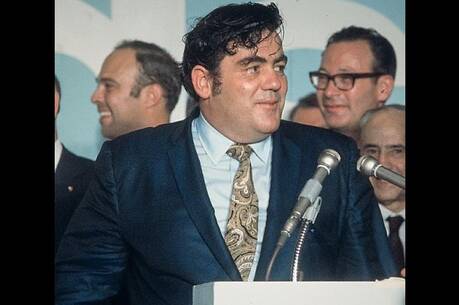Music's New World Order
This capacious, impressive, often enjoyable book takes as its point of departure the late 19th-century orchestral cultures of New York and Boston, assembling a story for which the author’s Understanding Toscanini and Wagner Nights well prepared him. This focus is understandable, since Joseph Horowitz did his very first writing about classical music in The New York Times review pages. But the title of this book promises something far broader.
Does the active and enlightened Moravian musical culture of 18th- and 19th-century America somehow not count? Or do the vital concert activities of colonial Philadelphia and Charleston hold no interest for the author? Gallic opera in New Orleans was much patronized by African-Americans and helped engender musical styles that became rags, blues and jazz, whose offshoots would soon amaze the whole Western world. That alone gives New Orleans classical music a global cultural importance that could even be said to dwarf the tale of a few cities that Horowitz relates. But New Orleans gets a single paragraph, and there is a subsection toward the back of the book about the jazz threat. For 100 years, major European composers have pointed out that the major contribution of the United States to international music came out of provincial poverty that was predominantly African-American.
Relatively few people heard the famous orchestras and opera companies, compared with the great masses of people who once flocked to free concerts by municipal organists in other large American cities, where they were hearing the latest works of Wagner, Humperdinck or Saint-Saëns. But nobody will learn that from this book.
That great segments of the population, even in New York and Boston, received their main exposure to classical music in church seems to escapeor simply not to interestthe author. Even if we limit our interest to concert life, we ought to be alert to what was actually heard, rather than what we spotlight out of habit. When the fascinating German-Jewish Leopold Damrosch arrives in New York, we are naturally interested to read of his organizing a performance of Handel’s Messiah in 1874, but we might also like to take into account its performance in Trinity Church, on Wall Street, as early as 1770; doing so might help to put the work in its actual local context.
Anyone interested in American cultural history will find Horowitz’s general arguments about his favorite aspects of the subject compelling, and the book is worth sticking with. The author has provided plenty of data from which readers can draw their own conclusions about subjects that he treats (though it is occasionally difficult, without access to cited documents, to know whether a point made comes from the documents or is a formulation of his own).
Here is an example of history that startles and lends credence to talk of decline in operatic life. On Christmas Day 1909, Oscar Hammerstein’s Manhattan Opera presented Tosca and Tales of Hoffmann in New York, Faust and Aïda in Philadelphia, Le Jongleur de Notre Dame, Cavalleria Rusticana and Pagliacci in Pittsburgh, and Mignon and Le Caïd in Montreal!
It is fun to learn that it was Olga Samaroff (born Lucy Hickenlooper in Texas) who convinced the London-born, Oxford-educated Leopold Stokowski to adopt a more or less Polish accent and to claim Polish birth when he was equally Irish, Scottish and English; or to learn that Stokowski, soon after resigning his post as organist of St. Bartholomew’s on Park Avenue in New York, was named conductor of the Cincinnati Symphony only five days after he conducted a symphony concert for the first time. That debut had been arranged for him by Samaroff, and it seems only right and just that these two operators were to marry and continue their wily and inexorable climb together.
What many readers will find most satisfying is Horowitz’s diagnosis of what he calls the fall of America’s classical music. He attributes this to cults of personality and ill-begotten marketing. It is hard to disagree with him on his gloomy conclusions and predictionsunless, that is, we lay out the boundaries of worthwhile serious music more broadly and generously than this book does. If we do that, we may find our cavils about the fall symmetrical with our reservations about the rise. We may discover that we need not be so pessimistic about the future as is our author, who can actually say that at the death of Anton Seidl in 1898, New York was now musically leaderless. This would doubtless have come as a great surprise to the many thousands of New Yorkers whose life in classical music was not entirely dependent on the work of one man working for institutions bankrolled by the colossally rich magnates.
The great Dvorak, who notoriously loved things American, refused ever to set foot in a Metropolitan Opera where the socially omnipotent Mrs. Vanderbilt arrived precisely at 9 p.m., received guests in her box and its adjoining parlor, and conspicuously left in great state just before the last act began. We may be just as cranky in choosing what sort of limitations on our understanding of classical music culture we will accede to.
This article also appeared in print, under the headline “Music's New World Order,” in the May 30, 2005, issue.








